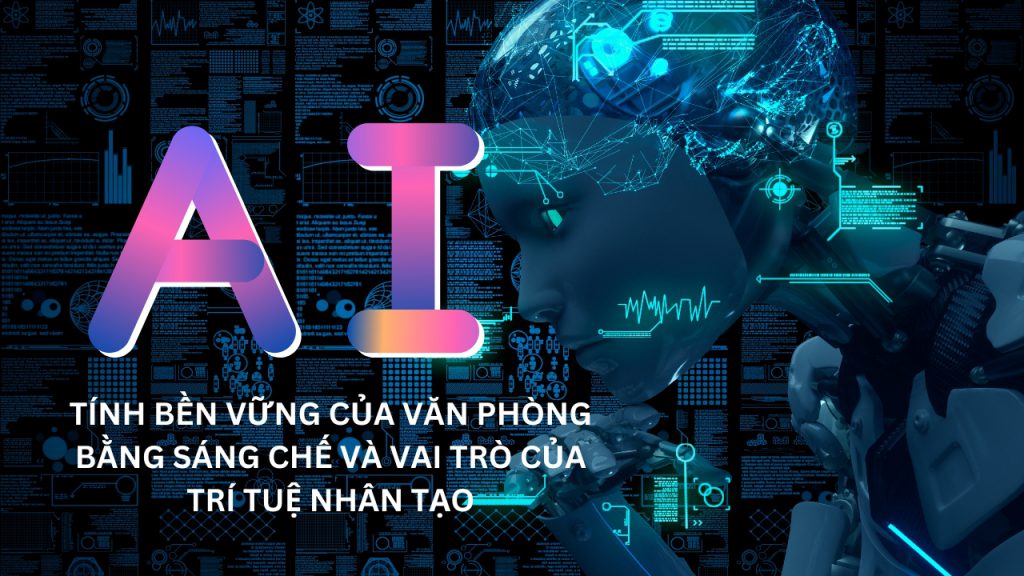
Investment in research and development (R&D) is at an all-time high. It is estimated that global R&D investment has reached $2,476 trillion by 2022, fueling continued strong growth in the number of patent applications that are placing the global patent ecosystem, especially the patent office, into a state of tension. The increase in the number and complexity of patent applications can lead to significant delays in granting patents, lead to regulatory uncertainty, which can stifle innovation. , discourage investment in R&D and erode the competitiveness of national economies.
A study by the Japan Patent Office in 2018, estimated that their examiners spent 30% of their total time searching for technical status (proof of known invention). come) and 10% more time to understand it.
Using AI to assist in identifying potential technical conditions
One method being used by patent offices to improve timely patentability is to use artificial intelligence (AI) solutions to assist in identifying potential technical status in appraisal process. AI can mimic, at lightning speed, the ability of humans to compare data between patent applications with existing patents and non-patent publications to detect similarities that an appraiser can assess when looking for technical condition. While this does not replace the requirement to evaluate search results by a human examiner, it can significantly speed up evaluation in more than 70% of applications.

Kathy Van Der Herten (pictured above) says the increase in the number and complexity of patent applications can lead to significant delays in granting degrees, but AI can help speed things up that process. (Photo: Courtesy of CAS)
“AI can mimic, at lightning speed, the human ability to compare data between patent applications with existing patents and non-patent publications to detect out similarities that the appraiser can assess…”
Increasing number and complexity of patent applications
Based on WIPO data, CAS, a division of the American Chemical Society, estimates that the top five patent offices have had a compound annual growth rate of 4.4% in the number of applications. patent applications from 2012 to 2021. Adding to the increase in the number of applications is an increase in the complexity of the patent, as seen in the number of patent claims, Patents are cited for each claim, technical status citations for each patent, and other quantifications.
Finding technical status is a complex, iterative and time-consuming process. For each application, the searcher and examiner must devise a search strategy, choose which databases to use, perform the search, verify the results and, if necessary, refine and repeat the search. search using different parameters.
The scale of this search is staggering. According to a study by the European Patent Office, a comprehensive patent application search can be based on a technical condition search among approximately 1.3 billion technical records contained in 179 databases. data, resulting in approximately 600 million documents appearing in search results each month.
“Technology search among approximately 1.3 billion engineering records contained in 179 databases, results in approximately 600 million documents appearing in search results each month.”
Sự phát triển của các công nghệ mới và sự phức tạp của các đơn xin cấp bằng sáng chế đòi hỏi các thẩm định viên phải liên tục mở mang trình độ trong lĩnh vực chuyên môn của họ. Nếu được cấp cho dữ liệu có cấu trúc và được quản lý chặt chẽ, AI có thể tăng tốc quá trình bằng cách sàng lọc hàng triệu bộ dữ liệu và cung cấp các tài liệu tham khảo có khả năng xung đột với đơn đăng ký sáng chế mục tiêu.
Accelerate patent due diligence with AI-powered solutions
Many patent offices are turning to AI-powered solutions to help them deal with the increasing number and complexity of patent applications. According to WIPO, more than 70 AI-related applications are being deployed in 27 national patent offices, of which 13 are focused on finding technical status. While these are not a complete solution to the entire due diligence process, they are intended to speed up due diligence time, which promotes timeliness and ultimately customer satisfaction.

AI can speed up the patent due diligence process by sifting through millions of data sets and providing references that are likely to conflict with a filed patent application. (Image: koto_feja/iStock/Getty Images Plus)
For example, the Canadian Intellectual Property Office is using commercially available AI search engines to find the link between citations, patent applications and current technical status. The Japan Patent Office (JPO) is using AI to index files, suggest relevant patent classifications and keywords, and rank patent technical status documents by relevance. mandarin. Meanwhile, the US Patent and Trademark Office (USPTO) is using AI to help determine patentability, analyze patent prosecution history, and improve public access to USPTO data.
“Machine learning is effective for finding text and terms that are indexed, but less effective for patents related to the composition of matter, which often contains important data hidden importance in the internal structures.”
Recently, Brazil’s National Institute of Industrial Property (INPI) worked with CAS to complete a project that used an AI-assisted optimization workflow to accelerate the search for technical status. in the field of chemistry. Chemical patent applications, which account for about 15% of INPI Brazil’s backlog, are extremely complex and require both text-based and structured searches of patent publications and not a patent. The AI component of the solution is integrated with four algorithmic streams, representing different similarity patterns and other analyzes to ensure highly relevant results.
Each algorithm has its strengths. Machine learning is effective for finding text and indexed terms, but less effective for patents related to the composition of matter (where there are two or more mixed compounds) which often contain important data hidden in the internal structures. Likewise, a graph database can find similarities and associations that machine learning cannot. An aggregation algorithm then analyzes the results from the four streams and arrives at a unique list of publications that are most likely to have a conflict with the target patent application.
The benefits to productivity are substantial:
- Reduce appraisal time by up to 50%;
- Reduced search time for more than 75% of applications processed;
- Contributed to an overall 80% reduction in INPI’s patent backlog.
Quality data, quality results
Quality data is important for training AI algorithms. The more data machine learning algorithms can access, the more relevant, certain, and reliable their results will be. Much of the publicly available data that is not culled can include copying errors, mislabeling units, and overly complicated patent language, all of which hinder search. This is especially difficult in the chemical and life sciences fields, where concepts are described inconsistently across publications or there are keywords hidden deep in tables or images. Using standardized, prepared, and connected scientist-selected data in a structured format makes information more easily searchable and improves training of AI algorithms as well as search performance on the technical status of the invention.
“While training teams may vary across technologies, specialties, and patent applications, the basic approach to applying AI remains the same.”
For the INPI Brazil project, we relied primarily on the CAS™ Content Collection, the world’s largest collection of chemical and life science data, extracted, indexed, and linked for simplicity. Simplify access and retrieval of relevant information. In addition, we generated a random patent sample from the training algorithm that we used as the control group to measure the accuracy of the results and the hit rate. These patents have been evaluated by examiners at patent offices in China, Japan, the US and Europe, and verified by our team of IP search experts to the extent possible. suitability.
While team training can vary across technologies, disciplines, and patent applications, the basic approach to AI adoption remains the same. For any field of technology, conflicting citations are used to identify during testing for every training group. Highly complex specialties such as chemistry may perform better with a subject-specific training group, but other specialties may not show significant improvement when using a targeted training group. pepper. In many areas, as long as the technology is present in a common training group, the models will work well.
However, the quality of the data is of considerable importance.
Integration that leverages people expertise and workflow and technology
AI project teams require a wide range of expertise in different fields. The INPI Brazil project has combined technology with experts in data analytics, workflow integration, high-performance computing, scientific discovery, and more.
Team members need cross-functional expertise in the challenges and outcomes in question. For example, someone with data science experience might not be able to develop fully efficient algorithms if they don’t understand the nuances of chemical structure. Computer scientists creating machine learning models must also understand chemical data and structures.
Workflow integration is another key principle in creating a comprehensive solution for patent offices. Assessors who have to access multiple systems and directories to search for documents during an assessment can benefit from workflow improvements and technological improvements towards a digital dashboard. single place where all applications and supporting documents can be accessed and analyzed as well as where they can see why certain references are returned and results are generated like provide the traceability they need to document prosecution decisions and internal quality reviews.
Summarize
Significant improvements in patent office productivity, efficiency, and customer service can be achieved when examiners can use tools built on top of the latest technologies, such as AI. As innovation accelerates, so does the number and complexity of patent applications. This means that patent offices will continue to require new methods to optimize the patent examination process and thus meet stakeholder expectations for higher levels of satisfaction. for service.
While AI solutions can help address these ever-evolving challenges, they will still require expertise to implement the right approaches. The “one model fits all” approach will not work because no two patent offices have the same needs. Patent offices have similar general operations but differ in the level of personnel and technology needed to support each area. While algorithms can address a common need, the way appraisers interact with outputs can vary widely based on their existing technology environment.
“The productivity, efficiency, and customer service of the patent office can be greatly improved when examiners are able to use tools built on top of the latest technologies, such as AI. .”
Patent offices seeking to achieve their strategic outcomes will require customized innovations that meet stakeholder expectations despite resource constraints. The combination of the right aggregated data, technology and human expertise can provide the flexibility needed to support sustainable improvements in the future.
Read more about how AI can enhance the productivity of the global patent system in the CAS white paper titled “Sustainability of the global patent system: AI’s role in enhancing productivity .”
Thank you: Matthew Bryan và Andras Jokuti , Patent and Technology Sector, WIPO
Bruno Poulequen , Ulrike Till và Young-Woo Yun , Infrastructure and Platforms Sector, WIPO
Editor: Catherine Jewell
Source: WIPO Magazine of INTERNATIONAL INTELLECTUAL PROPERTY:
https://www.wipo.int/wipo_magazine_digital/en/2023/article_0001.html






